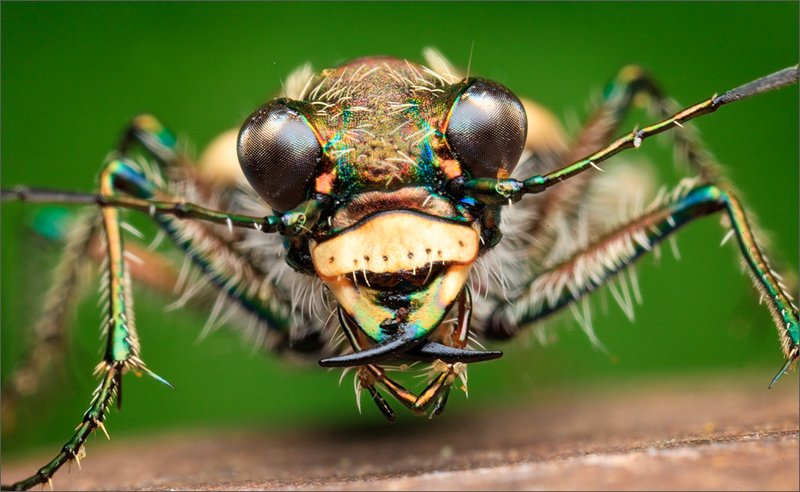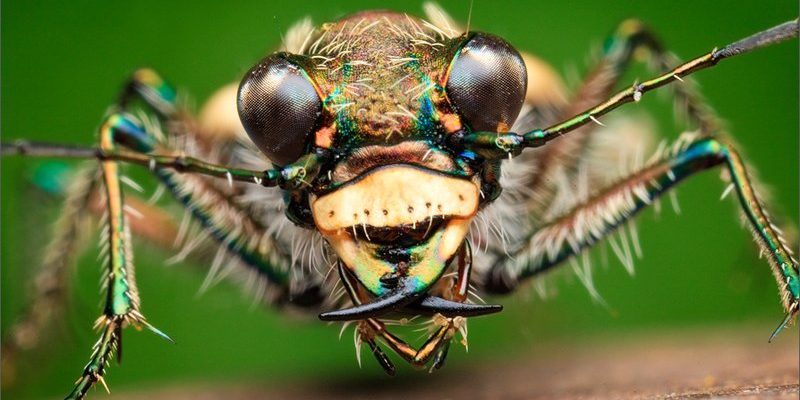
Have you ever spotted a tiger beetle scurrying across the ground, its iridescent shell glistening like a tiny jewel? These fascinating little creatures, known for their speed and striking appearance, are not your average beetles. They belong to the family Cicindelidae and are renowned for their predatory habits, incredible eyesight, and unique behaviors. Understanding the tiger beetle is like peeling back the layers of a complex puzzle — each part tells a story about survival, adaptation, and the beauty of nature.
Imagine a tiny athlete, sleek and fast, darting across the sandy soil in pursuit of its next meal. That’s the tiger beetle for you! With over 2,600 species worldwide, these beetles thrive in diverse environments, from coastal dunes to forest floors. This article will dive deep into the world of tiger beetles, exploring their habitat, diet, and fascinating characteristics that make them a standout in the insect kingdom.
What is a Tiger Beetle?
A tiger beetle is a member of the Cicindelidae family, which encompasses some of the fastest and most colorful insects out there. Generally speaking, tiger beetles are small, usually ranging from 1/4 to 1 inch in length. They’re easily recognized by their long legs and large, bulging eyes, which help them to spot their prey from a distance. Their bodies can be metallic green, blue, or bronze, often adorned with striking patterns. But don’t let their beauty fool you; these beetles are efficient predators.
The name “tiger beetle” reflects their aggressive hunting behavior. They typically chase down their prey rather than ambushing it, showcasing impressive speed and agility. In fact, some species can run at speeds up to 5.6 miles per hour! That might not sound like much until you realize it’s equivalent to a human running over 200 miles per hour. This extraordinary ability allows them to catch a wide variety of insects, including ants, caterpillars, and other small creatures.
While many species can be found everywhere across the globe, preferences for habitat can vary significantly. Some prefer sandy areas, while others thrive in moist, forested regions. Regardless of their environment, tiger beetles play a vital role in maintaining ecological balance by controlling insect populations.
Physical Characteristics of Tiger Beetles
Tiger beetles are known for their striking appearance. One of their most notable physical features is their shiny exoskeleton, which reflects light beautifully. This iridescence isn’t just eye candy; it can help them blend into their surroundings, providing a measure of camouflage against predators. The size of these beetles can vary quite a bit, with some species being as small as 0.5 centimeters, while others can grow up to 4 centimeters long.
Another key feature is their long legs, which aid in their impressive speed. The legs are perfectly designed for running and allow them to dart quickly across various terrains. Their bulging eyes give them excellent vision, a trait that’s essential for spotting both prey and potential threats. In fact, a tiger beetle’s large compound eyes can see in almost all directions, allowing them to react quickly when danger is near.
Interestingly, tiger beetles have a unique adaptation for hunting. They are capable of moving fast, but they often stop and look back when running, which may seem odd at first. This behavior allows them to track their prey and make accurate decisions on how to continue the chase. It’s like they have built-in high-speed cameras in their heads, always ready to capture the next move of their dinner!
Habitat of Tiger Beetles
Tiger beetles can be found on every continent except Antarctica, showcasing their adaptability to different environments. Their habitats are as diverse as their appearances. Many thrive in sandy or loose soils, which allow for easy burrowing and hunting, while others prefer damp, wooded areas or grasslands. Some species are even adapted to live in deserts where they explore the dry, cracked earth, hunting for insects that share their harsh habitat.
In North America, you might spot tiger beetles along the edges of rivers, lakes, and coastal dunes. They enjoy sunny spots where they can bask in the warmth and stay active. These beetles are particularly fond of areas where they can dig and hide in the sand. On the other hand, some species are more comfortable in shaded forested regions, demonstrating their ability to adapt to varying conditions.
What really makes their habitat interesting is their seasonal behavior. During the warmer months, they are highly visible, actively hunting and mating. As the temperatures drop, some species enter a state of dormancy or hibernation, hiding away until the weather warms up again. This seasonal cycle ensures their survival and continual presence in their environments.
Diet and Feeding Habits
Tiger beetles are fierce predators, and their diet reflects this predatory prowess. They primarily feast on other insects, including aphids, ants, and various small larvae. What’s particularly fascinating is the method they use to capture their meals. These beetles are known for their speed and agility, allowing them to chase down their prey effectively. In many cases, they can run nearly as fast as the insects they hunt!
When they catch their prey, tiger beetles use their powerful mandibles to hold and consume them. These mandibles are strong and perfectly adapted for cracking open shells, making them deadly to soft-bodied insects. It’s almost as if they have their own set of little pincers, ready to grab and eat whatever comes their way. They tend to prefer live prey, but they’ll also scavenge on dead insects when necessary.
The feeding habits of tiger beetles can vary by species and habitat. For example, some species are more opportunistic hunters, feeding on whatever small insects they can find, while others have specialized diets, targeting specific types of prey. This adaptability in feeding habits only adds to their success as predators, ensuring they thrive in diverse environments.
Reproduction and Life Cycle
The life cycle of a tiger beetle is a fascinating journey, beginning with the mating rituals of adults. During the mating season, male tiger beetles engage in a series of elaborate displays to attract females. They may perform courtship dances, showcasing their colors and swift movements. Once a female selects a mate, they will mate and the female will lay her eggs in the ground or in sandy areas, often near suitable habitats for their larvae.
As the larvae hatch, they have unique adaptations that allow them to thrive underground. They are predatory as well, using a strategy similar to that of adult tiger beetles. Larvae will dig burrows and wait for unsuspecting insects to pass by. When prey comes into range, they will shoot out and grab their meal using their strong mandibles, showcasing their inherited hunting instincts.
The transition from larva to adult is a fascinating transformation. After several weeks or months, depending on the species, the larvae enter the pupal stage, where they undergo metamorphosis. When the adult beetles emerge, they will quickly begin the cycle anew. Depending on the species, the lifespan of a tiger beetle can range from one year to several years, with adults often surviving long enough to reproduce multiple times.
Unique Behaviors of Tiger Beetles
One of the most intriguing aspects of tiger beetles is their unique behaviors. For instance, many species exhibit a behavior called “stalking,” where they will follow and chase their prey, often zigzagging to confuse it. This action not only showcases their speed but also their intelligence as predators.
Another fascinating behavior is their ability to “dance” when encountering potential threats. This isn’t dancing in the traditional sense, but rather quick movements that can confuse predators or rivals. Their bright colors may also signal danger, warning potential threats that they’re not easy prey. It’s a clever mix of biology and behavior that ensures their survival in the wild.
Additionally, when threatened, some species can take advantage of their environment by burrowing into the ground or hiding under debris. This ability to blend into the environment is crucial for avoiding predators and can turn the tide in their favor when the odds are against them. It’s just one more layer of their complex existence that helps them thrive.
Conservation Status
Many species of tiger beetles face threats from habitat loss, pesticide use, and climate change, which can disrupt their populations. Because they are sensitive to changes in their environment, the decline of tiger beetle populations can indicate broader ecological issues. Conservation efforts are crucial to protect these mesmerizing insects and their habitats.
Some regions have initiated conservation programs to safeguard the unique habitats that support tiger beetles. This includes restoring natural areas and reducing pesticide use in agricultural practices. Through awareness and education, we can encourage the preservation of these habitats and promote the importance of tiger beetles in our ecosystems.
While not all species are at risk, some localized populations are monitored for conservation status. By paying attention to these signals, scientists can better understand how to protect these beetles and their environments. Public initiatives, combined with community engagement, are vital to ensure these beautiful creatures continue to thrive.
Interesting Facts About Tiger Beetles
| Fact | Detail |
|---|---|
| Speed | Some species can run at speeds up to 5.6 mph! |
| Diet | Tiger beetles primarily feed on other insects, showcasing their predatory nature. |
| Habitat | They can be found in a variety of environments, including sandy areas and forests. |
| Species Diversity | There are over 2,600 species of tiger beetles worldwide. |
| Life Span | Their lifespan can range from one year to several years, depending on the species. |
| Mating Ritual | Males perform dances to attract females during the mating season. |
FAQ
What do tiger beetles eat?
Tiger beetles are predatory insects that primarily feed on other small insects. They hunt and consume ants, caterpillars, and various insect larvae. Their strong mandibles allow them to catch and crush their prey effectively. Some species may also scavenge on dead insects when live prey is scarce.
Are tiger beetles harmful to humans?
No, tiger beetles are not harmful to humans. While they have strong mandibles, they are not aggressive and pose no threat unless provoked. They are more of a benefit to the environment as they help control pest populations.
How fast can tiger beetles run?
Tiger beetles are known for their impressive speed. Some species can run at speeds of up to 5.6 miles per hour, which is quite fast for their small size. This speed aids them in chasing down prey and escaping potential threats.
What are the best habitats for tiger beetles?
Tiger beetles prefer a variety of habitats, including sandy soils, grasslands, and forest edges. They tend to thrive in sunny areas where they can find plenty of prey and suitable environments for digging and hiding.
Do tiger beetles undergo metamorphosis?
Yes, tiger beetles undergo complete metamorphosis, which includes stages of egg, larva, pupa, and adult. The larvae are predatory and hunt for their food underground before transforming into adult beetles.
What adaptations do tiger beetles have for survival?
Tiger beetles have several adaptations that help them survive, including their speed, strong mandibles, and excellent eyesight. Their vibrant colors can also serve as a warning signal to potential predators, while their ability to blend into their surroundings provides camouflage.
Can tiger beetles be found everywhere?
Tiger beetles can be found worldwide, except for Antarctica. They thrive in various environments, showcasing their adaptability to different habitats, from deserts to coastal areas.

